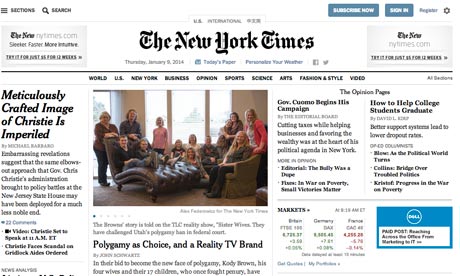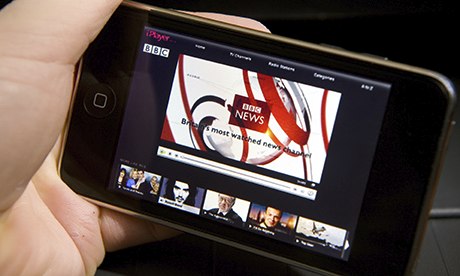The new New York Times: making the concept of redesign obsolete
The Gray Lady has overhauled with 'hamburgers', native ads and clever design, but for all the good, personalisation is wanting

A website redesign is often an expensive, time-consuming, over-hyped exercise in media navel-gazing: an expression of institutional ego over users' needs. So I will confess a pre-emptive shrug at news of the newest New York Times online. The redesign kills the irritating news-site habit of cutting stories into multiple parts. In print, we newspaper folk called that "jumping" from, say, the front page to one inside, and every reader survey ever performed told editors that customers hated that. Newspapers continued to do it online not because scarce space forced us to but instead because we wanted to pump up our page views: the more pages you viewed, the more ads you saw, the more money we made – or so went the myth of old mass media carried over to online. The Times now lets us scroll through a story without clicking.The new Times uses what geeks call the "hamburger button" (three parallel lines – two sandwiching the third) to get rid of the time-worn left-hand navigation bar. The navigation bar can be the basis of political turf wars, with editorial and commercial departments battling for more signage.The Times attracts more than half its readers every day.
I think this will make it easier to iterate with new technologies, obsoleting the concept of the redesign, rather than the present site. The new design features are there to help readers online to access content and navigate through the site more easily. The changes help on all platforms and means that the website is the same for each viewing device.
The Guardian is working on its own new systems and redesign.
BBC iPlayer sees record numbers over Christmas as tablets beat computers
Views on tablets hit 2.2m on Boxing Day, passing computers for first time, and smartphones getting 1.6m requests

The BBC has hailed 2013 as the year of the tablet after its popularity as a Christmas present saw viewing of TV programmes on the iPlayer via such devices pass laptop and desktop computers for the first time. Dan Taylor, head of the BBC iPlayer, said that tablet usage overtook viewing on computers as the most popular way to access the iPlayer from Boxing Day through to 30 December.
- On Boxing Day there were 2.2 million iPlayer requests from tablets, compared to 2.1 million from computers.
- Requests from mobile devices such as smartphones also rose significantly on Boxing Day to just under 1.6 million
- By New Year's Eve, tablet requests had dropped back to 1.93 million
- New Year's day programme requests were up 35% year on year, from 8.1 milllion in 2012.
I think that these figures are due to the increase in the demand for new devices and technology products. Kids always want the latest smartphones/tablets and therefore this makes the sales and views at certain times of the year fluctuate.
No comments:
Post a Comment